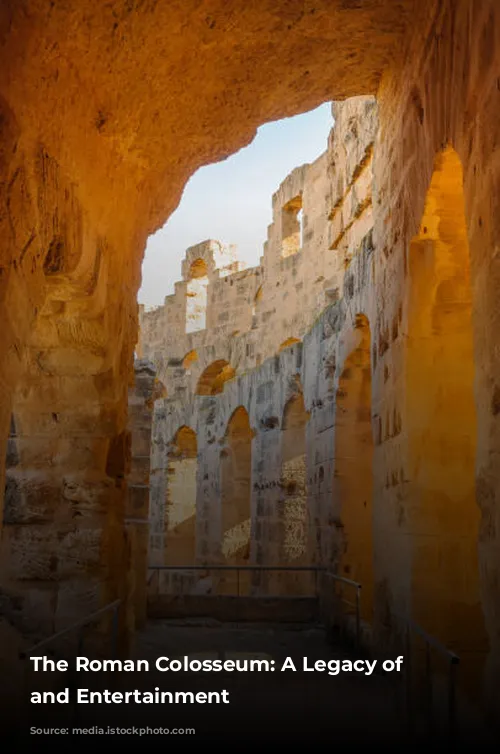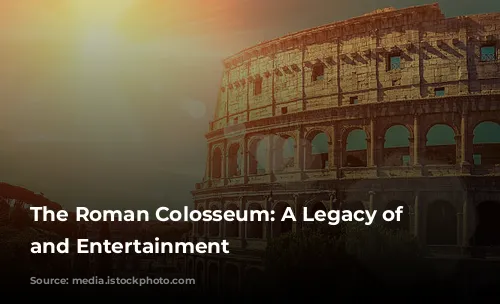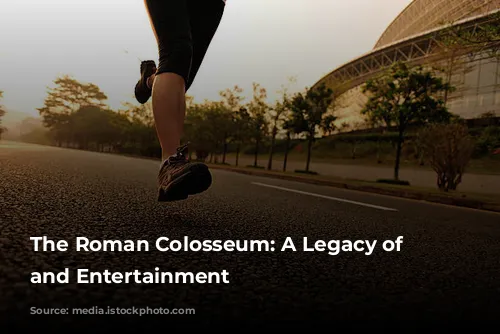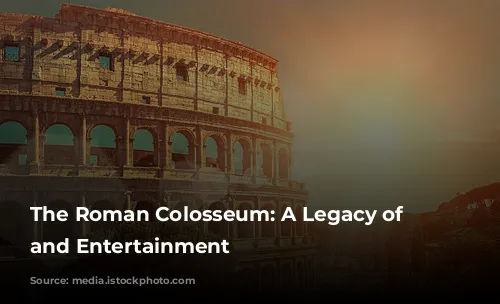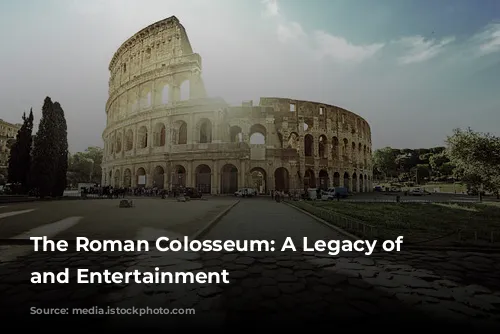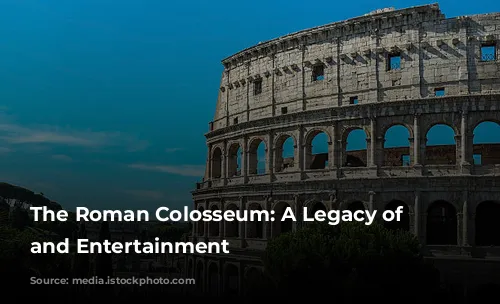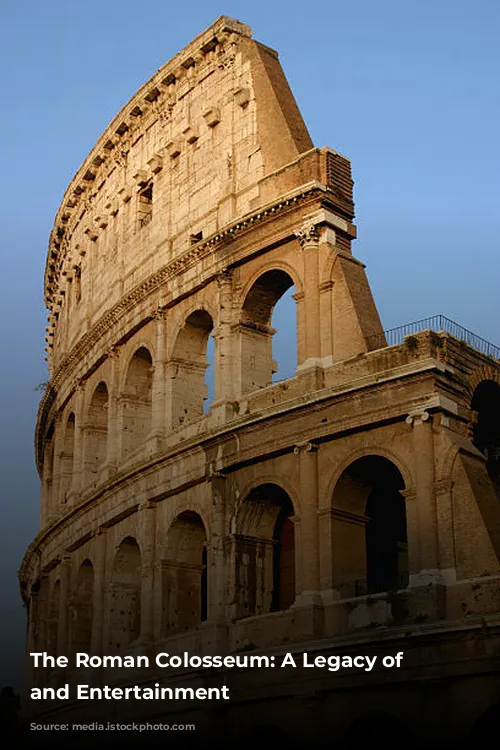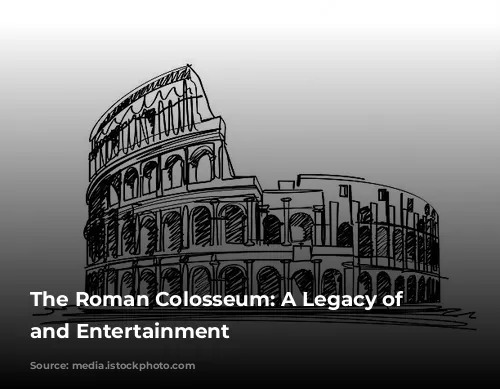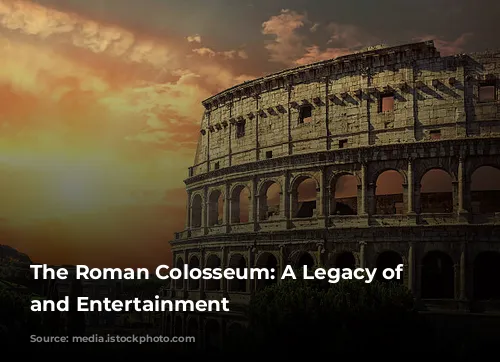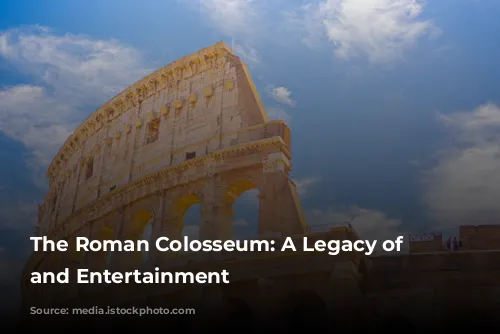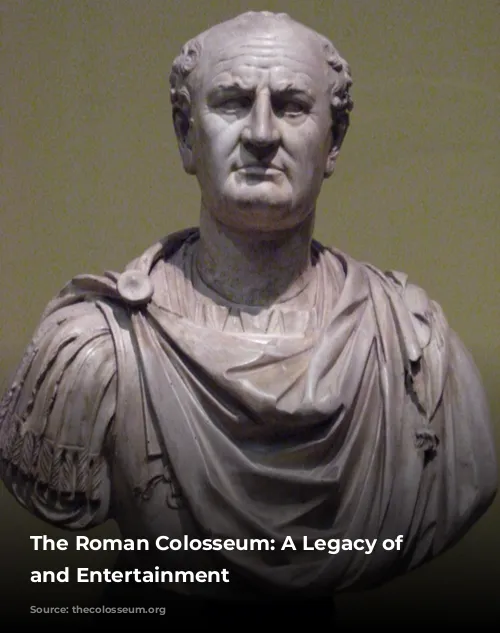Imagine a massive structure that once echoed with the roar of the crowd, the clash of swords, and the anguished cries of animals and men. This is the Roman Colosseum, a monument to a bygone era of gladiatorial combat, wild hunts, and public executions. The Colosseum, once known as the Flavian Amphitheater, stands as a testament to the grandeur and brutality of the Roman Empire. It’s a place where history comes alive, captivating visitors with its stories of battles, bloodshed, and the sheer scale of its construction.
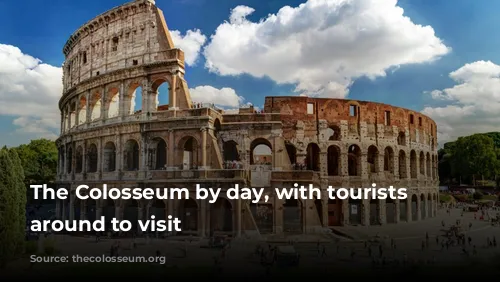
Building a Monument to Power
The Colosseum wasn’t built overnight. Construction began in 72 AD under Emperor Vespasian, a time when the Roman Empire was at its peak. He envisioned a grand amphitheater that would showcase the might and power of Rome to its citizens. However, Vespasian tragically passed away before the Colosseum’s completion. His sons, Emperors Titus and Domitian, continued the project, ensuring its completion in 80 AD.
The Colosseum’s construction was a massive undertaking, employing an estimated 60,000 to 100,000 laborers, mainly Jewish slaves. They tirelessly toiled under the watchful eyes of Roman engineers and craftsmen, transforming the Colosseum from a vision into a reality.
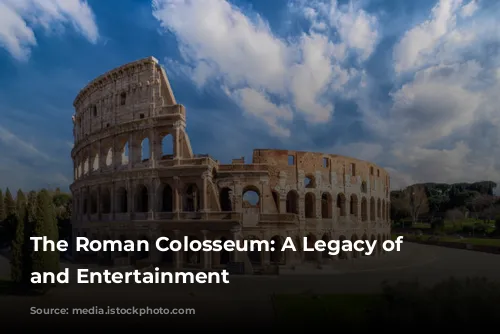
A Spectacle of Blood and Thrills
The Colosseum was not just a building, it was a stage for entertainment, albeit of a brutal nature. Gladiator battles were the Colosseum’s most famous spectacle, where skilled fighters engaged in deadly combat for the amusement of the crowds. These battles were not just chaotic brawls; they were carefully choreographed events, with different classes of gladiators, referees, and even doctors present.
Beyond gladiators, the Colosseum also hosted hunts, pitting humans against wild animals. Lions, tigers, bears, and even elephants were brought into the arena to face armed hunters or condemned prisoners. Executions were also a part of the Colosseum’s bloody repertoire, with criminals and prisoners facing their fate at the hands of wild beasts or the gladiators.
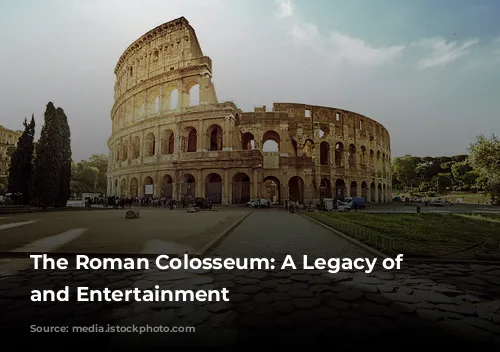
A Timeless Symbol of Rome
The Colosseum, though a symbol of a brutal past, remains an icon of Roman architecture and engineering. Its grandeur and scale are awe-inspiring, even today. While its purpose may have been barbaric, the Colosseum’s construction, its ingenuity, and its enduring presence are a testament to the Romans’ masterful ability to build lasting structures.
The Colosseum’s history is a fascinating blend of power, spectacle, and brutality. Today, it stands as a reminder of a time when entertainment came at a high price, and where the boundaries of human cruelty were pushed to their limits. Yet, it remains a powerful testament to the ingenuity and ambition of the Roman Empire. As you wander through its ruins, you can almost hear the echoes of the past, the roar of the crowd, the clang of swords, and the roar of the animals. The Colosseum is a place where history whispers its secrets, and where the past comes alive.
